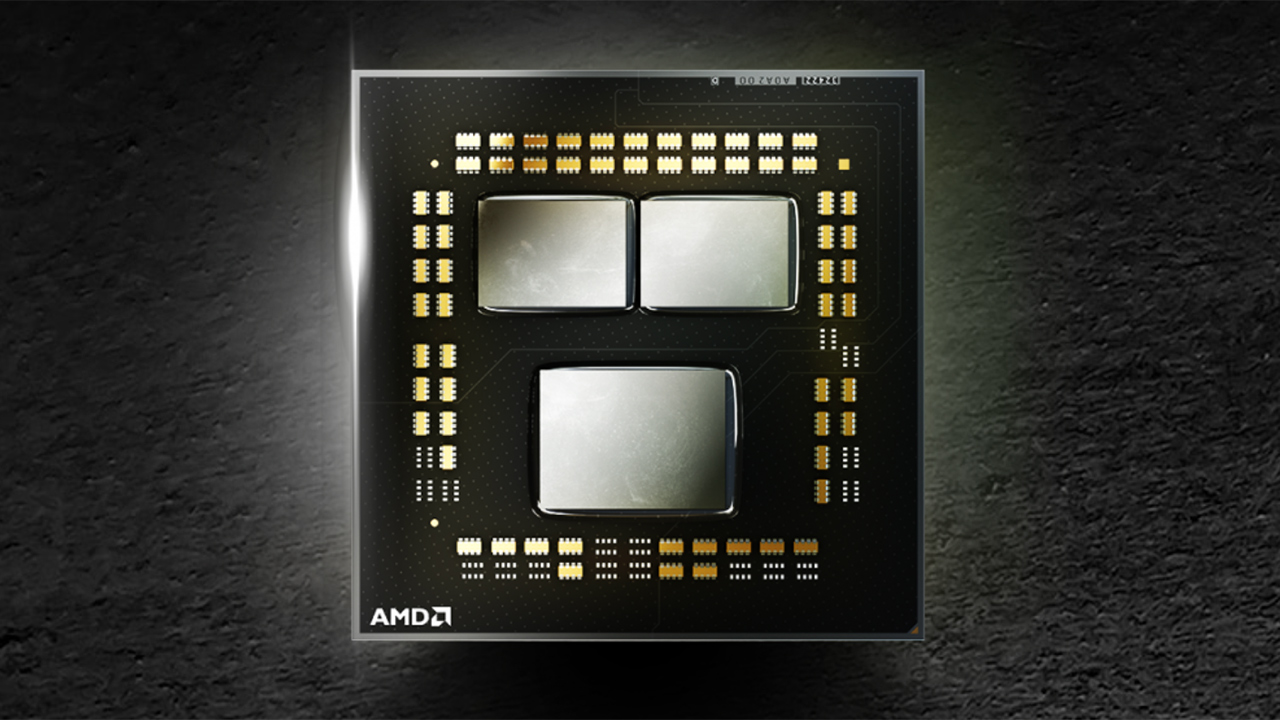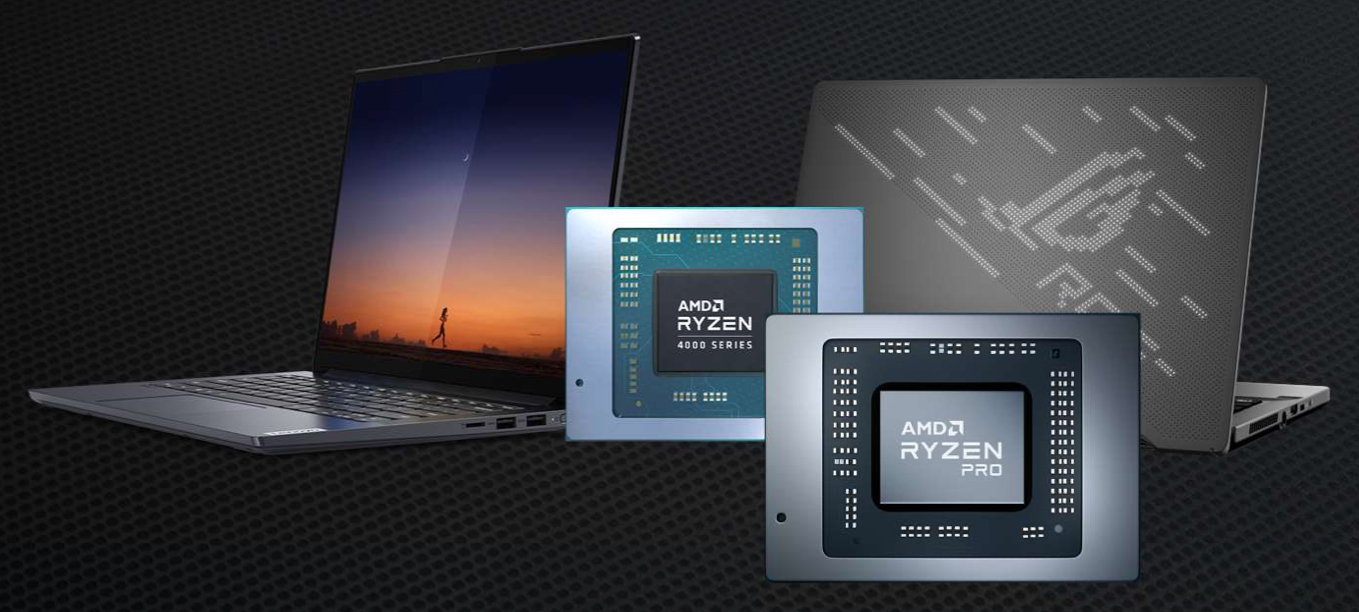AMD Hybrid CPUs: No Point in Big.Little for PCs Unless OS Can Use It
AMD continues to study hybrid CPU architectures
AMD filed a patent for hybrid processors featuring heterogeneous general-purpose cores as far back as 2017, but the company does not seem to have plans to bring such CPUs to the market before operating systems for PCs can use them properly. Joe Macri, Vice President and Product Chief Technology Officer at AMD, sees how different types of cores could bring advantages to PCs, but not before OSes get an appropriate scheduler and memory allocator (via PC Gamer).
Arm's Big.Little heterogeneous multi-core CPU technology, which uses high-performance 'big' cores for demanding tasks and low-power 'little' cores for background tasks, has proven to be quite useful on Google Android-based smartphones. Eventually something similar was introduced by Apple for its iOS-powered devices. Intel unveiled its first codenamed Lakefield hybrid processor for ultra-light and innovative form factors earlier this year and plans to bring its hybrid concept to higher-performance PCs in 2021 with Alder Lake CPUs.
AMD says that it has been studying hybrid CPU architectures for a while, but does not have any immediate plans it could share.
"We've been studying Big.Little," said Joe Macri, during an engineering roundtable, reports PC Gamer. "It's been 15+ years, so this is not a new concept in any way shape or form. We continue to study it, we continue to look at it. We're not going to talk about whether we'll do it or not, but I'm going to talk about some of the challenges of it and around what you really want to do with it. Is the goal power efficiency? Is the goal more performance? Is the goal just marketing, 'I want more core count', regardless of what it does for the other two variables? […] We're not going to do it just to have a bigger number."
Building a CPU with different types of general-purpose cores and a system architecture around it are just two parts of a multi-part equation. Operating systems need to learn how to properly schedule tasks and allocate memory for different types of cores in a bid to enhance user experience noticeably. Furthermore, actual programs have to seamlessly switch from one type of cores to another.
"Over time I think there will be a point when we are going to need 'little,' and it will be a point in time when the OS has the right attributes, the right capabilities in its scheduler and memory allocator, we'll have the right memory subsystem," said Macri. 'We'll be able to give you not just a little bit better experience, but a much better experience. If we can't get that experience change to be noticeable, why do it?"
AMD knows a lot about the importance of OS schedulers. Back in the day the company's FX-series processors featuring the Bulldozer microarchitecture could not hit performance numbers AMD anticipated because of Windows's scheduler, so AMD had to work with the software giant to get everything right. Even an optimized scheduler did not help AMD's Bulldozer to beat competitors, but it did improve performance and the lesson has certainly been learnt.
Get Tom's Hardware's best news and in-depth reviews, straight to your inbox.
"Just driving up the core count with little isn't going to be that useful until software comes along," said Macri. "It's not a simple problem, and I think there's been at least one company who has got it right. I wouldn't say all the companies have got it right that have started doing it. What we're really fighting, for Big.Little with AMD, is that Mike [Papermaster's] team is doing such a great job with Big, it makes it hard to win with Little."
When it comes to low power vs. high performance cores, there is always a dilemma about efficiency. Is it more efficient to use low-power cores along with memory and storage for a relatively long time or just use high-performance cores (as well as RAM and storage) for a short period of time and then idle everything? AMD currently has very competitive high-performance microarchitectures that can scale and be tailored both for low-power and high-end applications, so it is perfectly logical for the company to use what it has today. Anyhow, AMD officially does not have any low-power 'little' cores in its roadmap just yet.

Anton Shilov is a contributing writer at Tom’s Hardware. Over the past couple of decades, he has covered everything from CPUs and GPUs to supercomputers and from modern process technologies and latest fab tools to high-tech industry trends.
-
hotaru.hino And OS developers won't see a point in hybrid CPUs until they come out.Reply
Which is why I'm a believer that hardware manufacturers need a strong software team behind them to overcome the "chicken and egg" problem. -
spongiemaster Reply
That's why Intel will be using it first. Even if they have to fund all the development, you can bet Windows will be ready for big.little when Intel releases Alder Lake.hotaru.hino said:And OS developers won't see a point in hybrid CPUs until they come out.
Which is why I'm a believer that hardware manufacturers need a strong software team behind them to overcome the "chicken and egg" problem. -
TerryLaze Reply
What's the problem?! AMD released FX before windows was ready for them and the same goes for ZENs CCX and windows always patched it in relatively fast.Admin said:Despite granted patent, AMD has no immediate plans to introduce hybrid CPUs.
AMD Hybrid CPUs: No Point in Big.Little for PCs Unless OS Can Use It : Read more -
TechyInAZ I get it from AMD's perspective, high-performance architectures like Zen are very power efficient when idling, and AMD's impressive Precision Boost algorithm and super-fast frequency changes allow the CPUs to enter idle states super quickly. So making a big.LITTLE architecture doesn't really make a lot of sense. Even in laptops.Reply -
Makaveli ReplyTechyInAZ said:I get it from AMD's perspective, high-performance architectures like Zen are very power efficient when idling, and AMD's impressive Precision Boost algorithm and super-fast frequency changes allow the CPUs to enter idle states super quickly. So making a big.LITTLE architecture doesn't really make a lot of sense. Even in laptops.
Agreed with your post and what amd is saying.
Were not there yet. -
spongiemaster Reply
What performance oriented laptops have you used that the battery life was so great it couldn't be improved? With replaceable batteries becoming extinct, battery life is even more critical as the battery wears down over its lifetime.TechyInAZ said:I get it from AMD's perspective, high-performance architectures like Zen are very power efficient when idling, and AMD's impressive Precision Boost algorithm and super-fast frequency changes allow the CPUs to enter idle states super quickly. So making a big.LITTLE architecture doesn't really make a lot of sense. Even in laptops.
This is classic marketing 101 that every company does. Anything we don't have that the competition does isn't important or is too early to be useful. Fortunately, it's just that, marketing speak. If companies actually operated that way, there would never been any innovation in the industy. -
Kamen Rider Blade Do you really trust Microsoft to get BIG.little hybrid core support implemented correctly at this point?Reply -
JamesSneed No point unless you are severely TDP constrained anyhow. AMD will be on 5nm soon enough so I absolutely agree with them. There is plenty of space to shrink dies and add cores. I mean its not like you cant get a 64 core beast in the HEDT desktop already. That likely satisfies 99% of use cases already. Yes pointless.Reply -
Gomez Addams Count me as another who doesn't see the point. I can't see myself ever buying a machine with a mixed-mode CPU. I want something to either last as long as possible on a battery OR to give as much performance as possible, depending on my use for it. I do not want something that is going to compromise so heavily on both unless I could only have one and that's not likely any time soon.Reply -
hotaru.hino Reply
So you don't have a modern smartphone? They all use big.LITTLE.Gomez Addams said:Count me as another who doesn't see the point. I can't see myself ever buying a machine with a mixed-mode CPU. I want something to either last as long as possible on a battery OR to give as much performance as possible, depending on my use for it. I do not want something that is going to compromise so heavily on both unless I could only have one and that's not likely any time soon.
Also "last as long as possible on the battery" is a little vague in some sense. You could put a Z80 on 7nm and it'll probably last forever on modern batteries, but all that time is wasted waiting for the thing to do something.


